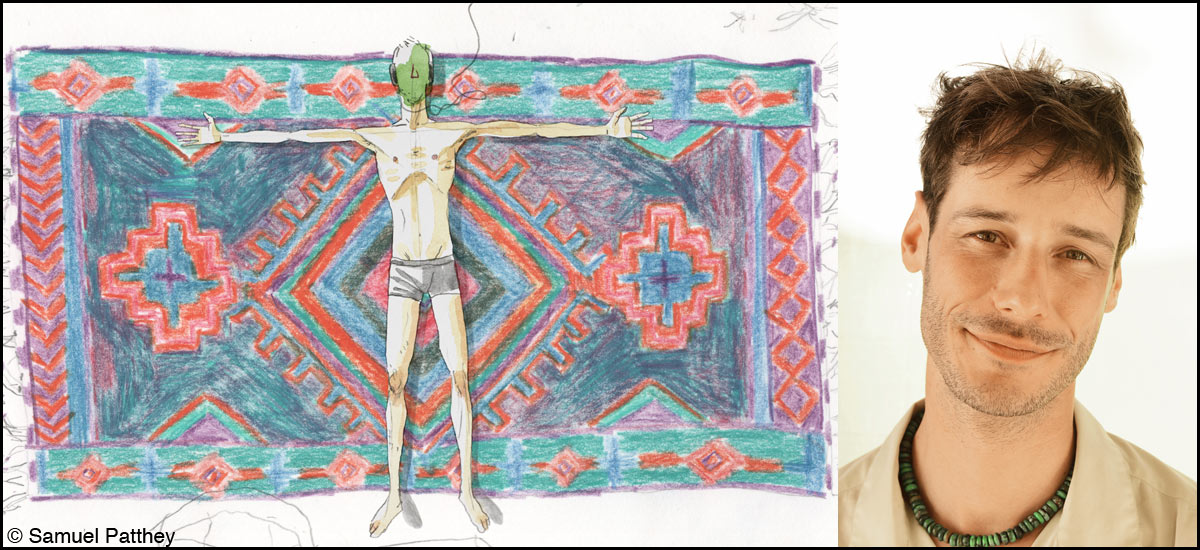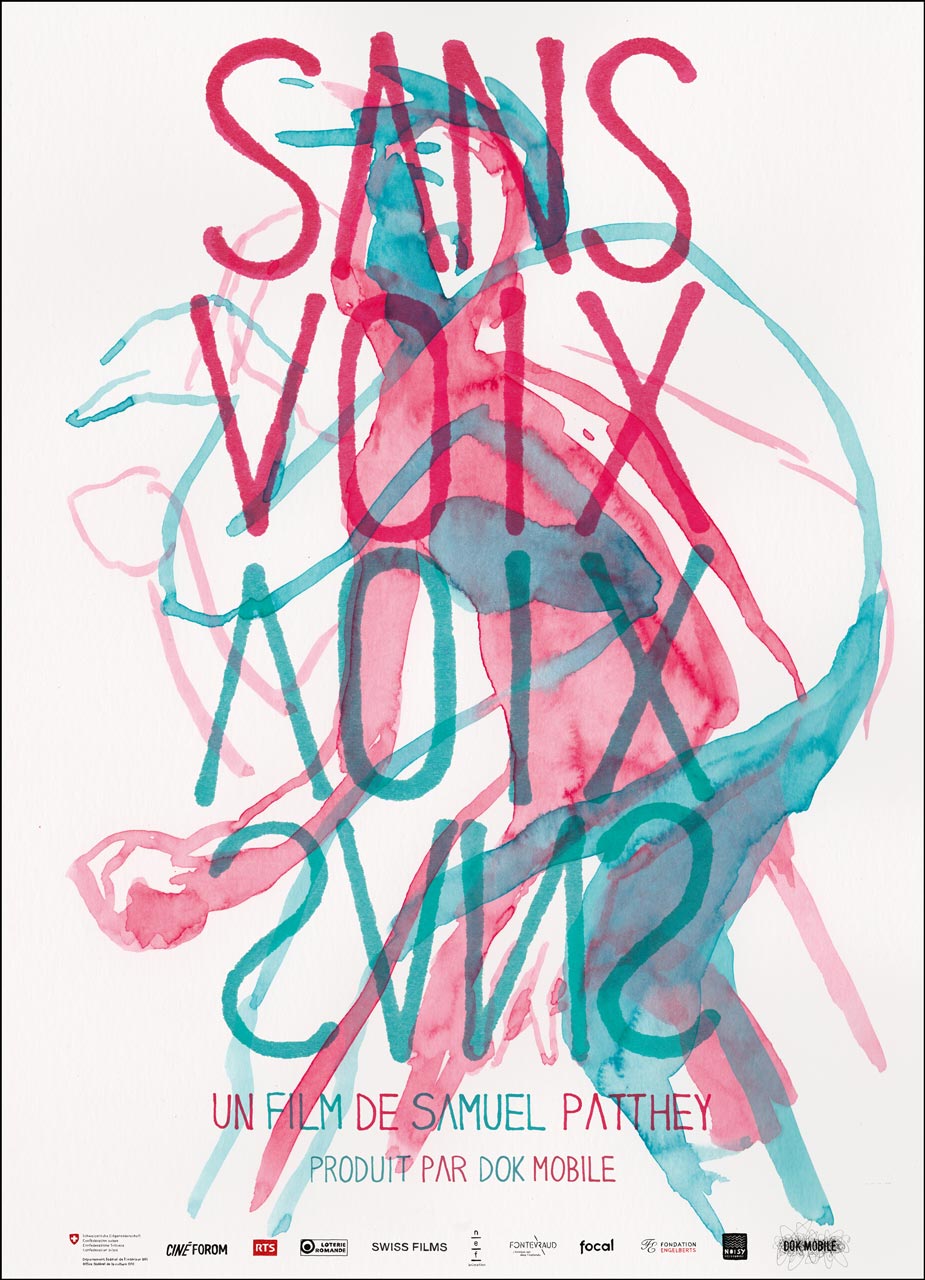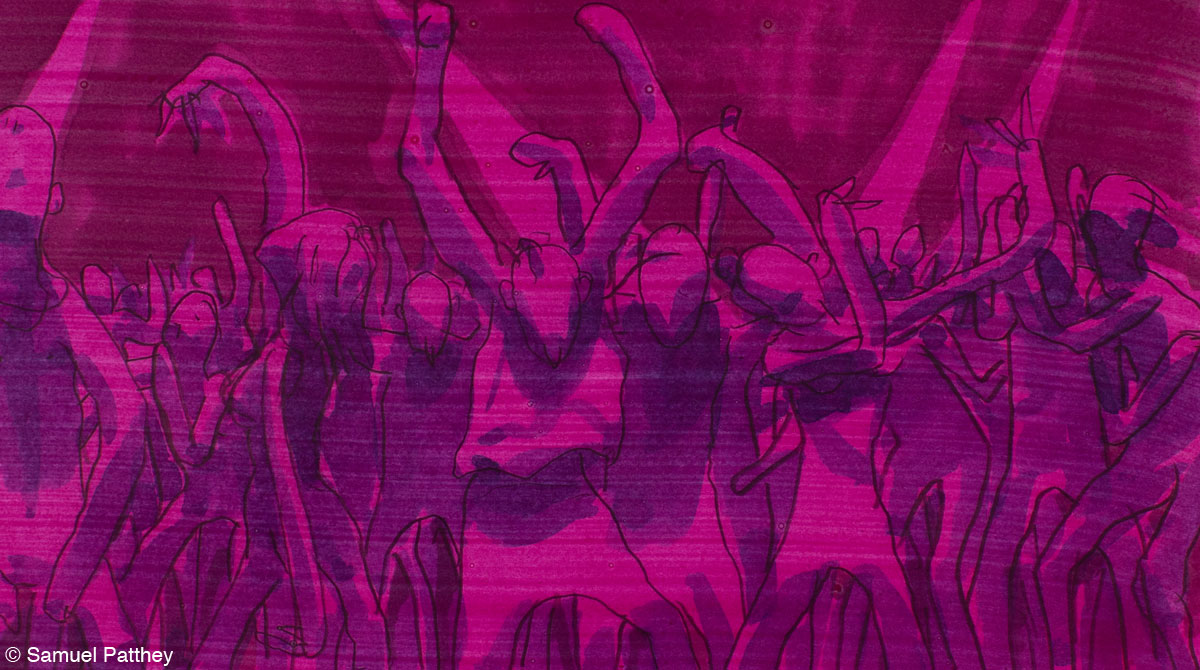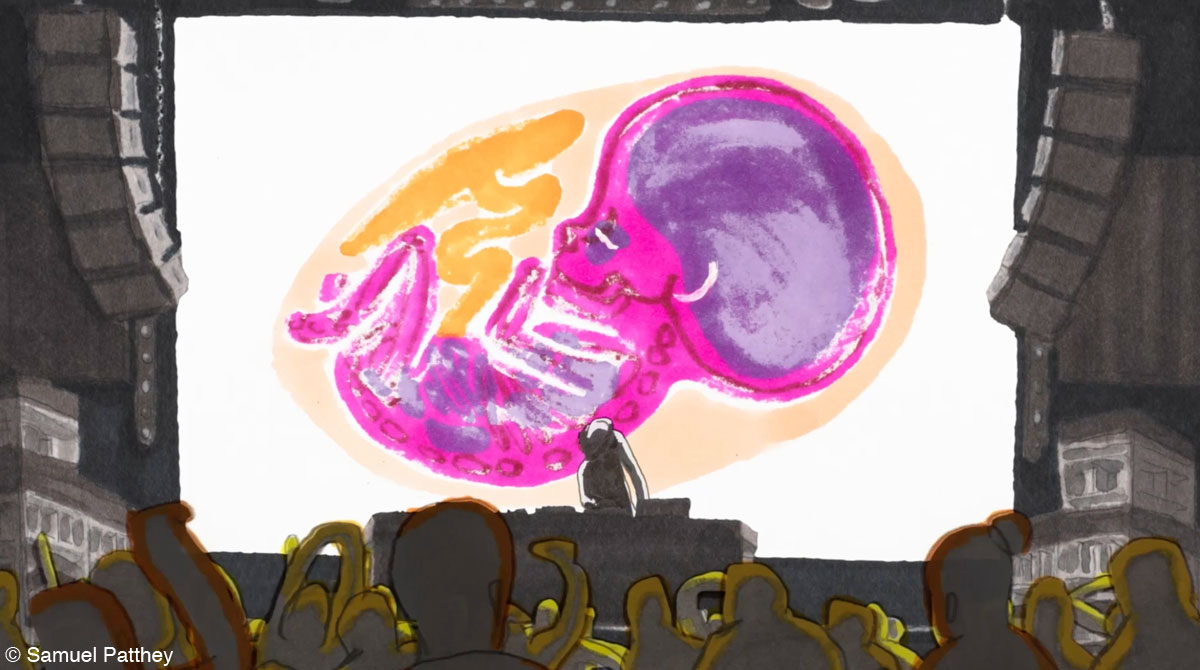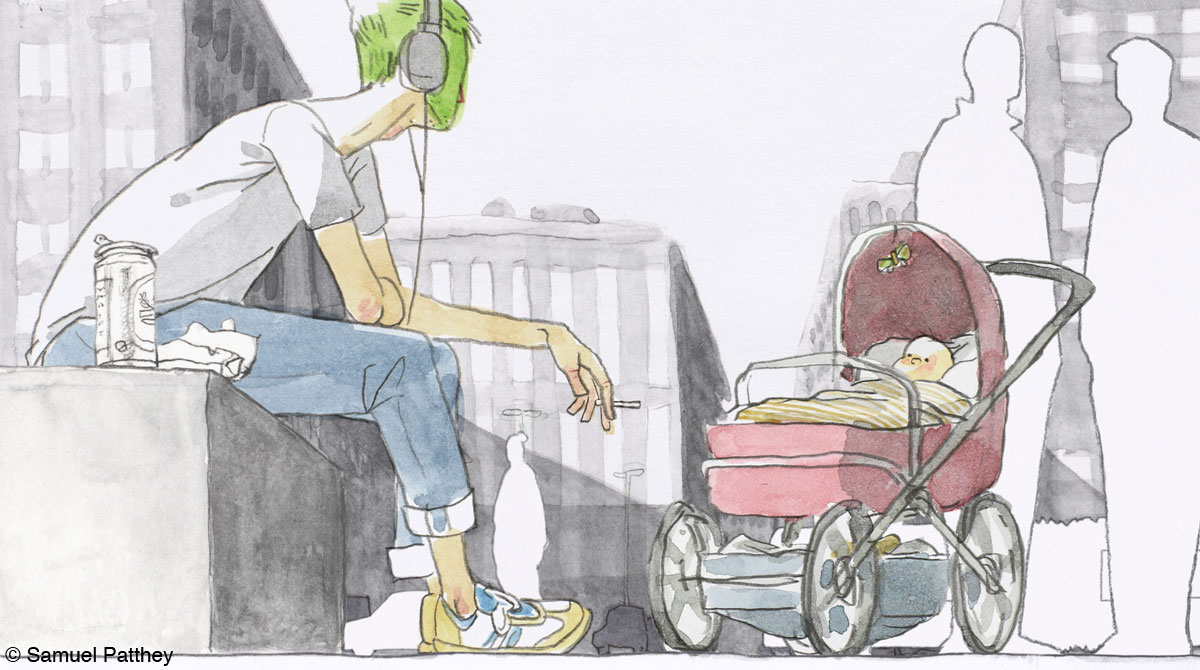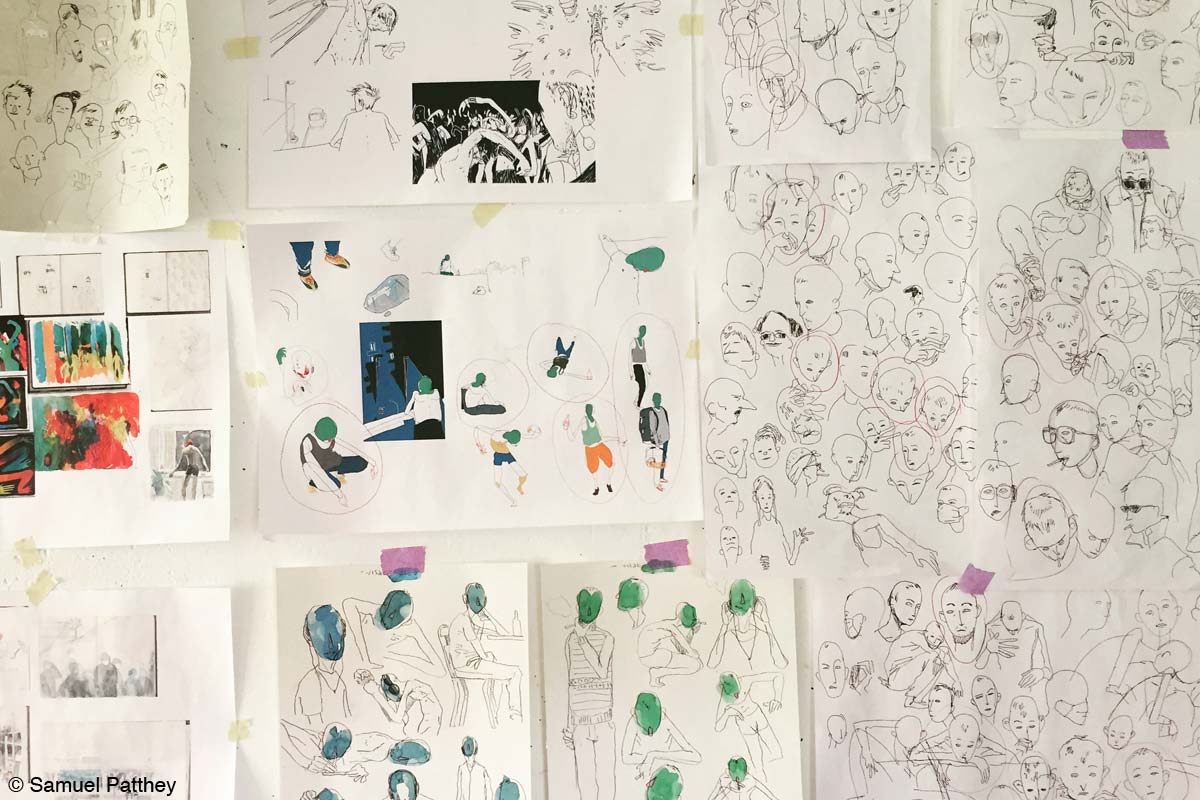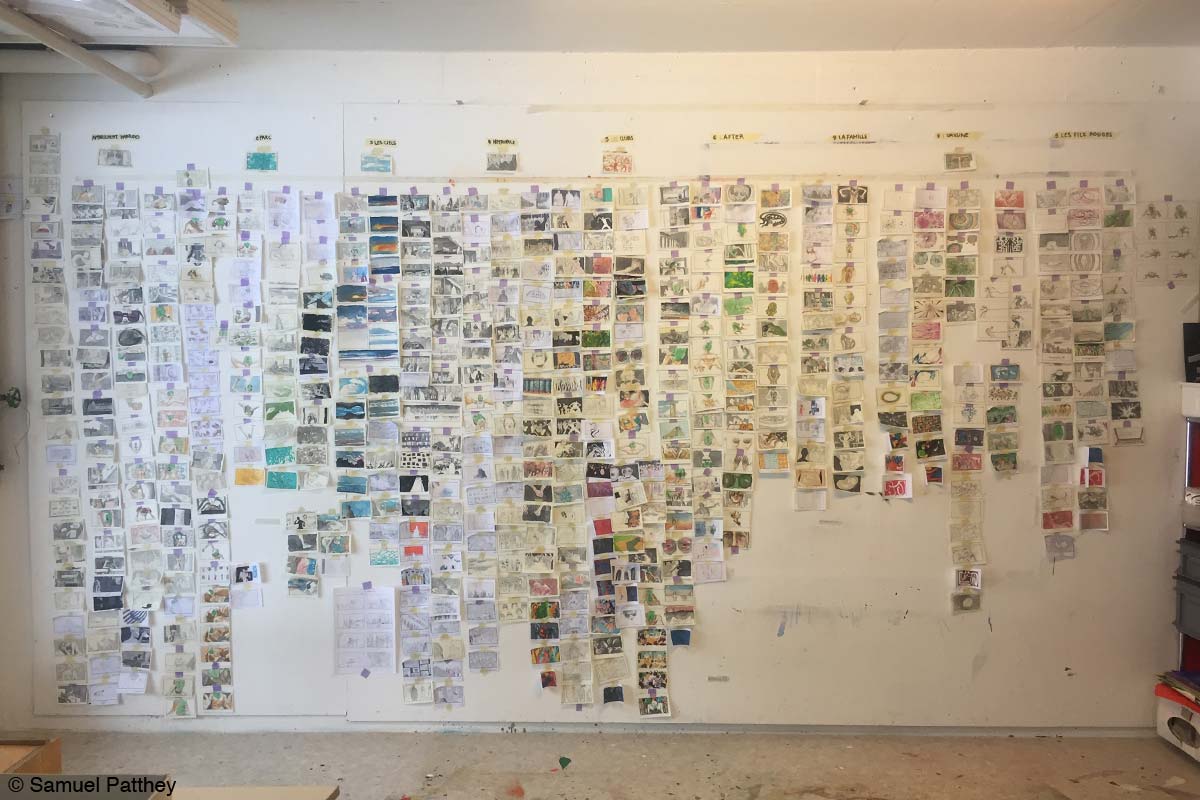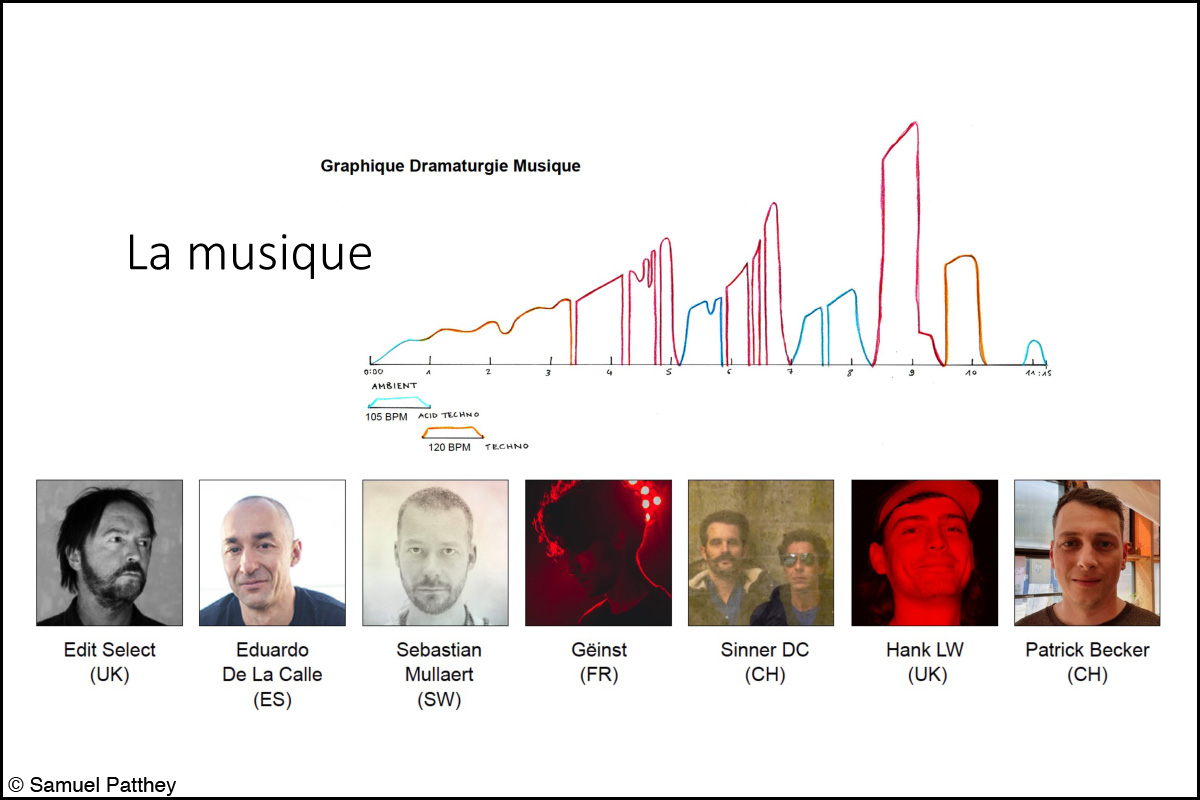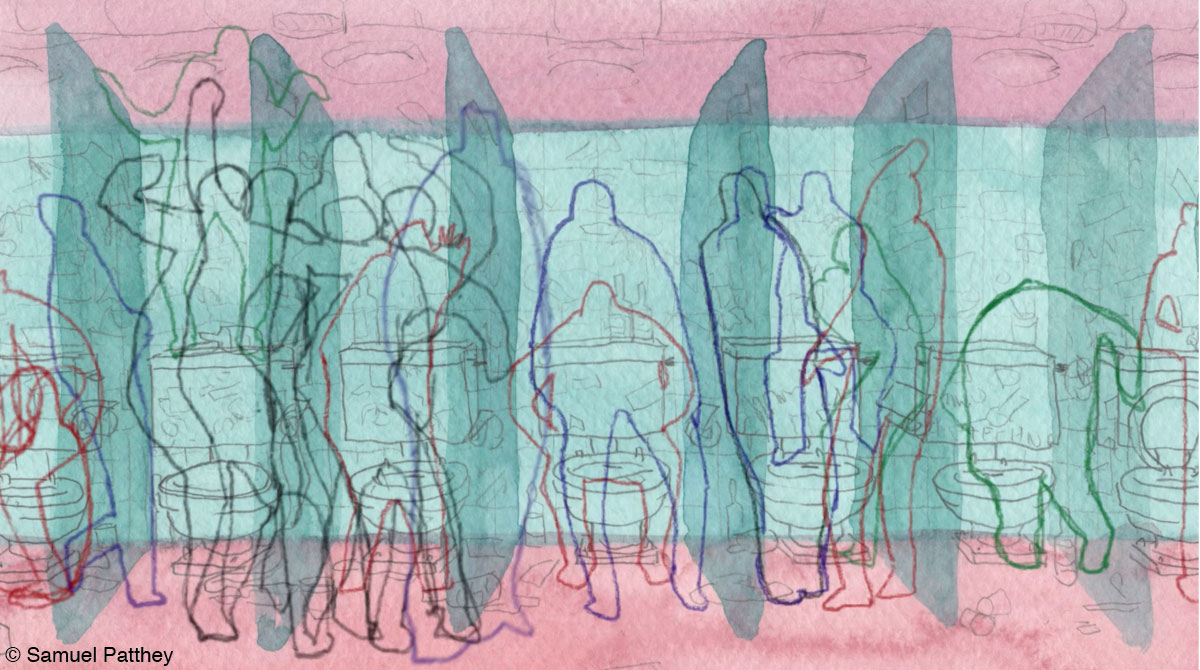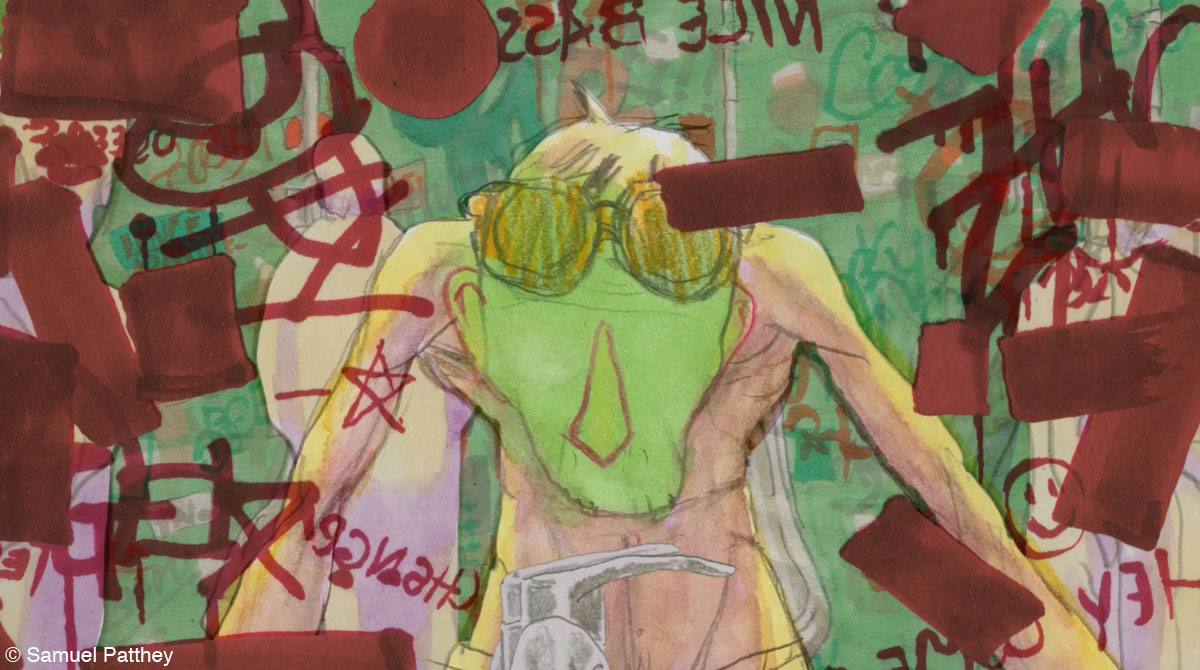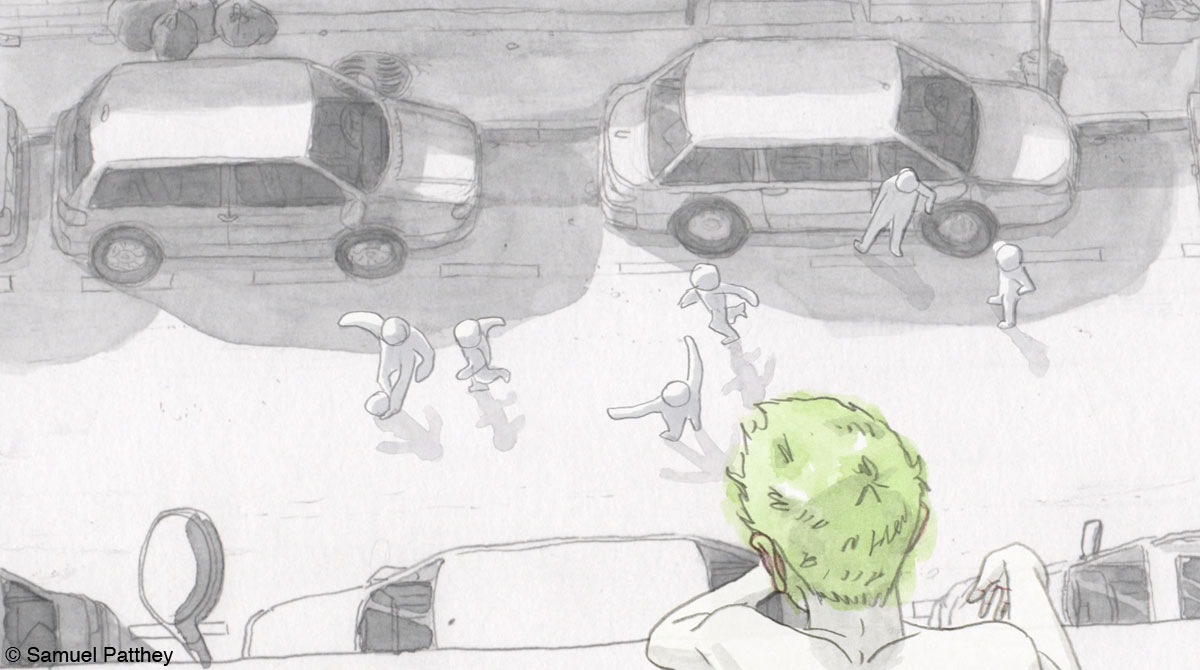Synopsis
Dan is a young man who spends a lot of time in his flat. His routine is always accompanied by electronic music pumping through his headphones. But when he steps outside, he feels disconnected from the world around him and only finds solace in nightclubs. Techno music and drugs transport him to a world where he can be himself, where he feels free. One day, he catches the eye of a baby which will change his perception of the world around him.
Film credits
Director and Screenplay: Samuel Patthey
Producer: Mark Olexa
Sound: Thomas Gassmann
Production: Dok Mobile
Voiceless (original French title: Sans Voix) is the new film by Samuel Patthey, whom you might recall for the international acclaim for his 2021 film, Peel, which received several awards, including the Cristal for a Short Film at the Annecy Film Festival.
Showcasing his accomplished 2D hand-drawn animation skills, the film depicts a narrative in which the protagonist’s trance-like world—dependent on electric dance music and drugs—intersects with a contrastingly calm and gentle reality. It is conveyed through a rich interplay of visual contrasts: stillness and movement, clarity and ambiguity, suddenness and gradualness, abstraction and concreteness.
We interviewed Samuel about the story behind Voiceless.
Interview Samuel Patthey
Hideki Nagaishi (HN): What was your primary aim in portraying the story of the film? What message do you most hope to convey to the audience through this film?
Samuel Patthey: My first idea came very early during my studies—back in 2016, something like that. The first idea was to portray, through my eyes, how I was living the techno culture and the clubbing. I really wanted to present interesting electronic music to a very bright audience, with colourful dancing moments.
During the development of this film, I met my wife, and very soon we knew we were having a baby. So, my life changed suddenly for the better, and I couldn’t make this film as I had originally intended. It was no longer my life, so I integrated this more critical and autobiographical aspect into Voiceless.
My message is: Dance yourself free, but don’t numb yourself. Life is worth being fully aware.
HN: Where did the initial idea of the film’s story come from?
Samuel Patthey: I was clubbing for about a decade, and I really wanted to present my passion for this music and the dancing.
HN: How did you develop the entire film’s story from the initial idea? Did you take particular care with anything during the process?
Samuel Patthey: I have developed my own storytelling and workflow to really enjoy making my films. I’m unable to write a scenario, so when I have an idea, I just draw, draw, and draw. I collect visuals as well as sounds around the idea, the topic.
When I feel I have enough material, I analyse it and try to sort it a bit. I put the images one after the other like a puzzle and try different ways of narration—but often it’s more or less clear at this stage how I want the film to be and which visuals need to be in it.
I took particular care with many things in this film, but I really enjoyed acting for the main character and trying to figure out natural poses.
The pencil line is also very important for me while animating.
HN: How did you develop the main character and his behavior? Is there a particular real-life model for the main character?
Samuel Patthey: Yes, as mentioned, it is pretty much me—with a green face and a few kilos less.
HN: In this film, the background music is deeply integrated into both the story and the visuals. Regarding the creative process of this film, did you have the music first, or did you prepare the music after the storyboard was completed? I’m also interested how you found and selected the music for the film.
Samuel Patthey: For the music, I very quickly had a clear idea of the style and pace. I don’t use a storyboard—I go straight to the animatic stage, and that’s when I start adding music examples.
I wrote to musicians I admire and knew would be able to create something in the mood of the music example I’d chosen. Most of them accepted and composed a first draft. Then I animated to the draft so it would sync with the BPM. They created the final version to match the animation as closely as possible. It was a nice but demanding ping-pong with ten musicians around the world.
HN: Were there any creative difficulties or challenges during your journey to develop this film? If so, please tell us about them and how you dealt with or resolved them.
Samuel Patthey: It was pretty difficult to communicate with all the musicians and keep up with the deadlines, because they were all touring and gigging around the world. Another challenge was not to over-animate the scenes—to avoid rushing the acting and to preserve the initial illustration.


